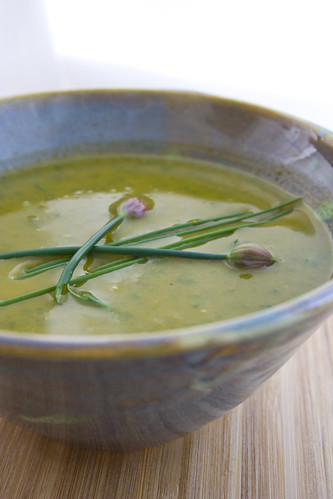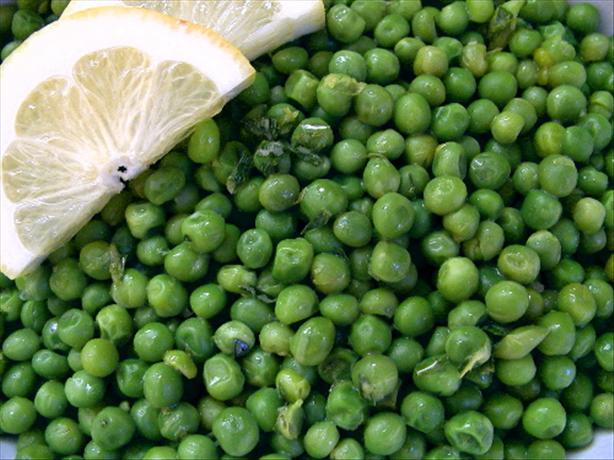Wednesday, June 8, 2011
It's Here! -- The Complete Idiot's Guide to Urban Homesteading
Recipe: Radish Greens Soup

2 Tablespoons Olive Oil
1 Large Shallot, finely chopped
2 Cups radish greens, roughly chopped, packed
2 Cups Vegetable Stock
1 Tablespoon Fresh Mint, finely chopped
1 Tablespoon Fresh Parsley, finely chopped
Sea Salt
Freshly ground Black Pepper
Fresh Chives for serving
In a large saucepan, heat oil over medium heat; add finely diced shallots.
Sauté, stirring often, until shallots are soft and translucent.
Add the radish greens and wilt, then add the stock.
Bring to boil; reduce heat and simmer for about 10 minutes.
Add the chopped parsley and mint. Season with salt and pepper, to taste.
Remove from heat; purée with an immersion blender or in blender, in batches.
Top with freshly chopped chives just prior to serving.
Makes 4 servings.
Recipe & photo from Vegan Visitor blog.
http://veganvisitor.wordpress.com/2009/06/09/dont-toss-those-radish-greens/
Recipe: Spinach and Orzo Salad

Recipe: Peas With Lemon and Tarragon

Ingredients:
16 ounces frozen baby peas
1 teaspoon sugar
1/2 teaspoon salt
2 tablespoons butter
1 teaspoon chopped fresh tarragon
1/2 teaspoon grated lemon peel
1 teaspoon lemon juice
salt and pepper
Place peas, sugar and salt in a medium saucepan; add just enough water to cover. Bring to a boil; reduce heat and simmer about 6 minutes. Drain.
Return the drained peas to the saucepan and add all remaining ingredients. Toss well to coat. Serve.
Recipe & photo from www.food.com
http://www.food.com/recipe/peas-with-lemon-and-tarragon-166409#ixzz1OdshtxwB
Tuesday, June 7, 2011
The LAST Action Alert -- Let's Make it Count!
Subject line: Please vote for the FPA ordinance
Dear Members of City Council,
I am a resident of Denver, living in the _____ neighborhood. On Monday you will be asked to vote on a new Food Producing Animals ordinance for Denver. This ordinance has the support of Community Planning & Development and the Department of Environmental Health (including Animal Control). It passed unanimously through Planning Board, and was supported by the Mayor's Sustainable Food Policy Council.
The FPA ordinance represents a reasonable compromise that addresses the interests and concerns of a variety of different groups. It contains numerous protections for neighbors and neighborhood context, above and beyond what exists in successful FPA ordinances in other cities. It contains numerous protections and considerations for the welfare and keeping of the animals, above and beyond what exists in successful FPA ordinances in other cities (and, incidentally, above and beyond what we require for other animals that are kept in the city).
This is a well written, balanced compromise that remedies the unreasonably burdensome current process for legally owning backyard Food Producing Animals. I ask you to vote in favor of the FPA ordinance on Monday night.
Sincerely,
(your name)
------------------
Action Alert -- Part 2
Councilwoman Carol Boigon is an At-Large councilmember, which means that she represents every resident of Denver. She is currently undecided about the FPA ordinance, and we would very much like her to vote in favor of it.
I would like everyone to take 1-2 minutes to place a quick phone call to Councilwoman Boigon's office. You should certainly ask to speak with her, but my guess is that she will be unavailable. However, you should leave a message with her aides. Leaving a message is a concrete way to register your "vote" in favor of the ordinance.
Call Councilwoman Boigon's office at (720) 865-8100 now. Explain to her aides (or the voicemail) that you are a Denver resident, and you would like her to vote in favor of the Food Producing Animals ordinance on Monday night. You don't need to have lots of specific talking points as to why you want her to vote in favor -- just tell her whatever your reason(s) might be.
Thank you!
Wednesday, June 1, 2011
Recipe: Mint Lemonade
Boil 2 cups of water. Remove from heat and add mint leaves to steep. Cool in the refrigerator.
Once it's cool, strain (or pick) the mint leaves out of the water. Use the mint water as part of the liquid for making lemonade. For example, I like the Minute Maid Lemonade that's made from concentrate. Use the mint water, then any additional water that the concentrate directions call for.
Use additional mint leaves for garnish, if desired.
Recipe: Radish Leaf Pesto
1 ounce nuts, such as pistachios, almonds, or pine nuts
a short ribbon of lemon zest cut thinly from an organic lemon with a vegetable peeler (optional)
2 tablespoons olive oil, plus more to get the consistency you like
salt, pepper, ground chili pepper


